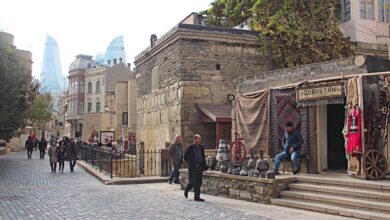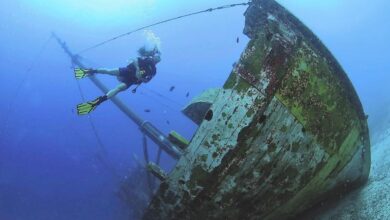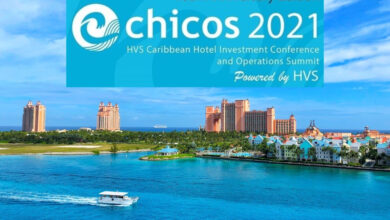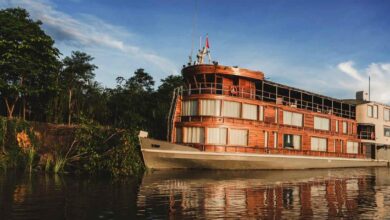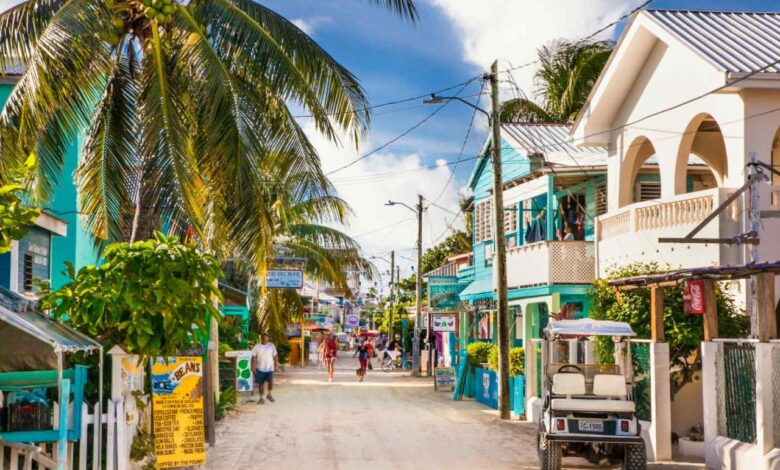
Belize Growth & Authenticity
Belize wants growth but with its authenticity intact. This exploration delves into the delicate balance Belize faces as it strives for economic progress while preserving its rich cultural heritage and unique identity. From the vibrant traditions of its people to the stunning natural beauty of its landscapes, Belize’s authenticity is deeply intertwined with its history and values.
The journey examines the economic challenges and opportunities Belize confronts, highlighting successful development initiatives and the critical role of sustainable tourism. It also explores how modern development can coexist with traditional values, drawing on case studies and expert insights to illuminate potential conflicts and solutions. Ultimately, the narrative aims to understand the strategies needed to ensure Belize’s growth is both sustainable and respectful of its rich cultural heritage.
Defining Belizean Authenticity
Belize, a vibrant tapestry woven from diverse threads, boasts a unique cultural identity deeply rooted in its history and heritage. This authenticity, a vital part of Belize’s character, is not merely a collection of traditions but a living expression of its people’s values and experiences. Understanding this authenticity is crucial for appreciating the heart of Belize and supporting its continued growth while respecting its rich past.Belizean identity is not static; it’s a dynamic expression constantly evolving through interaction with its surrounding cultures and the enduring influence of its historical roots.
Recognizing the importance of preserving these elements is key to understanding the essence of Belizean authenticity.
Cultural Heritage
Belize’s cultural heritage is a rich blend of indigenous Mayan traditions, British colonial influences, and African, Caribbean, and other immigrant contributions. This fusion has created a unique cultural landscape, evident in the country’s music, dance, art, and cuisine. The diverse cultural expressions are often a reflection of the various ethnic groups and their interwoven histories.
Traditions and Values
Belizean traditions are deeply ingrained in the daily lives of its people. From the vibrant celebrations of festivals like Garifuna Settlement Day and Christmas to the communal spirit of village life, traditions offer a window into the values that define Belizean society. Respect for elders, community involvement, and a strong sense of family are key components of these traditions, contributing to a strong sense of community and shared identity.
Significance of Cultural Elements to Belizean Identity
These elements are paramount to Belizean identity. They define the national character, shape social interactions, and provide a sense of belonging and continuity across generations. These shared cultural practices, traditions, and values create a cohesive social fabric and a deep sense of pride in their heritage.
Historical Context Shaping Belize’s Unique Character
Belize’s historical context has significantly shaped its unique character. The country’s long history, marked by Mayan civilization, British colonization, and the influx of diverse immigrant groups, has contributed to a blend of cultures that are now deeply intertwined. The legacy of these historical events is reflected in Belize’s present-day cultural landscape. For example, the Garifuna people’s resilience and their distinct cultural expressions, deeply rooted in their history, are a testament to this enduring impact.
| Element | Description | Significance | Historical Context |
|---|---|---|---|
| Cultural Heritage | A fusion of indigenous Mayan, British colonial, African, Caribbean, and other immigrant influences, creating a unique cultural landscape. | Defines the national character, shapes social interactions, and provides a sense of belonging and continuity. | Belize’s long history, marked by Mayan civilization, British colonization, and diverse immigration. |
| Traditions and Values | Vibrant celebrations, communal spirit, respect for elders, and strong family ties. | Contribute to a cohesive social fabric, a deep sense of pride, and a strong community identity. | The enduring legacy of these elements through generations, reflecting the values and practices of Belizean society. |
| Indigenous Influences | Deeply rooted in Belizean society, reflecting Mayan traditions and values. | Provide a foundational aspect of Belizean identity and heritage, including customs, language, and beliefs. | Evidence of the original inhabitants and their long-standing presence, continuing to influence modern Belize. |
| Colonial Influences | British colonial influence evident in language, governance, and infrastructure. | Provides a historical framework for understanding the development of Belizean institutions and societal structures. | The lasting impact of British rule, shaping aspects of the country’s governance and legal system. |
Understanding the Desire for Growth
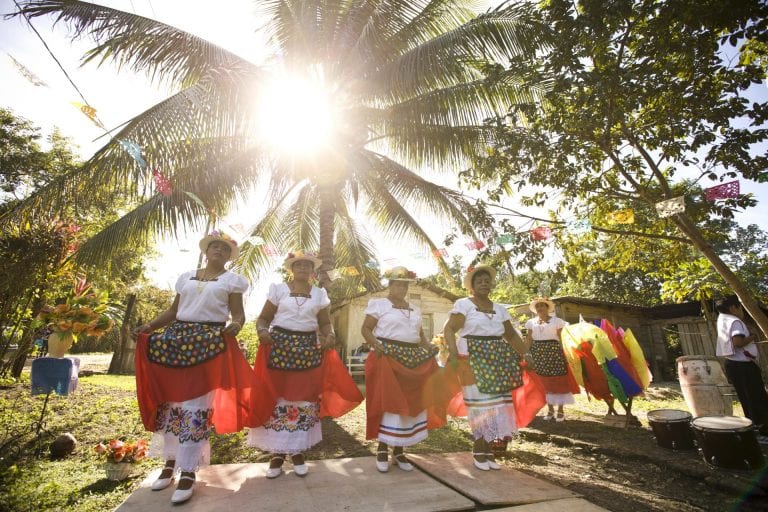
Belize, a vibrant nation brimming with natural beauty, faces the age-old challenge of balancing economic progress with the preservation of its unique cultural heritage and environment. The desire for growth is palpable, yet the path to sustainable development demands careful consideration of the nation’s specific needs and resources. This exploration delves into the economic landscape of Belize, examining its opportunities and challenges, successful initiatives, and the crucial role of tourism in its future.The pursuit of economic growth in Belize is intricately linked to its rich history and geographical position.
Belize’s economic development has been shaped by its colonial past, its reliance on agriculture and fishing, and the emergence of tourism as a major driver of the economy. Understanding the current economic context is essential to charting a course for a prosperous future.
Economic Challenges and Opportunities
Belize faces a range of economic challenges, including dependence on a few key sectors, limited infrastructure in some areas, and the need to diversify its economy. However, opportunities abound, particularly in harnessing the potential of its natural resources, developing its human capital, and leveraging its unique cultural heritage. Tourism, agriculture, and fisheries represent significant economic drivers with the potential for substantial growth.
Successful Development Initiatives, Belize wants growth but with its authenticity intact
Several initiatives have demonstrated promising results in fostering economic development. For instance, the establishment of community-based tourism projects has empowered local communities and created new employment opportunities. Additionally, investments in infrastructure, such as roads and ports, have facilitated trade and commerce, enhancing the overall economic efficiency. These initiatives highlight the importance of community involvement and targeted investments in infrastructure development.
Belize, it seems, wants growth, but with its unique charm and authenticity intact. This desire for progress is understandable, especially given the recent example of Jamaica, which is seeing a boost in winter arrivals thanks to a prioritized airlift. airlift a priority as jamaica confident of winter arrivals boost shows how strategic investments in connectivity can drive tourism, but Belize must tread carefully to ensure its authentic culture and environment remain central to its appeal.
This balance between development and preservation is key to Belize’s future success.
The Importance of Sustainable Development
Sustainable development is not just a trend; it’s a necessity for Belize’s long-term prosperity. Preserving the nation’s pristine environment and diverse ecosystems is crucial for attracting tourists, ensuring the health of the population, and maintaining the nation’s natural capital. This involves promoting environmentally friendly practices, supporting sustainable agriculture, and implementing robust conservation strategies. Recognizing that economic growth and environmental protection are not mutually exclusive is fundamental to Belize’s future.
The Role of Tourism in Belize’s Economy
Tourism plays a pivotal role in Belize’s economy, contributing significantly to employment, foreign exchange earnings, and overall economic activity. The industry is diverse, encompassing ecotourism, cultural tourism, and adventure tourism. Belize’s stunning natural landscapes and rich cultural heritage attract a substantial number of visitors annually. Strategic development of the tourism sector, coupled with responsible management, is critical for maximizing its benefits and minimizing its potential negative impacts.
Comparison with Historical Context
Belize’s current economic situation is a product of its historical context. Historically reliant on agriculture and fishing, the nation has evolved towards a more diversified economy, with tourism playing a progressively important role. Understanding this historical evolution provides valuable insight into the present and future direction of economic development.
Economic Sectors in Belize
| Sector | Current Status | Growth Potential | Challenges |
|---|---|---|---|
| Tourism | Significant contributor to GDP, with potential for expansion. | High potential through diversification and sustainable practices. | Competition, infrastructure limitations, and managing environmental impact. |
| Agriculture | Traditional sector with room for modernization and diversification. | Potential for increased productivity and value-added products. | Market access, technological limitations, and climate change. |
| Fisheries | Important for livelihoods and food security. | Potential for sustainable practices and value-added products. | Overfishing, market access, and conservation. |
| Construction | Limited capacity and dependence on external resources. | Potential for growth in tourism and infrastructure projects. | Skill shortages, bureaucratic processes, and maintaining quality standards. |
Balancing Growth and Authenticity
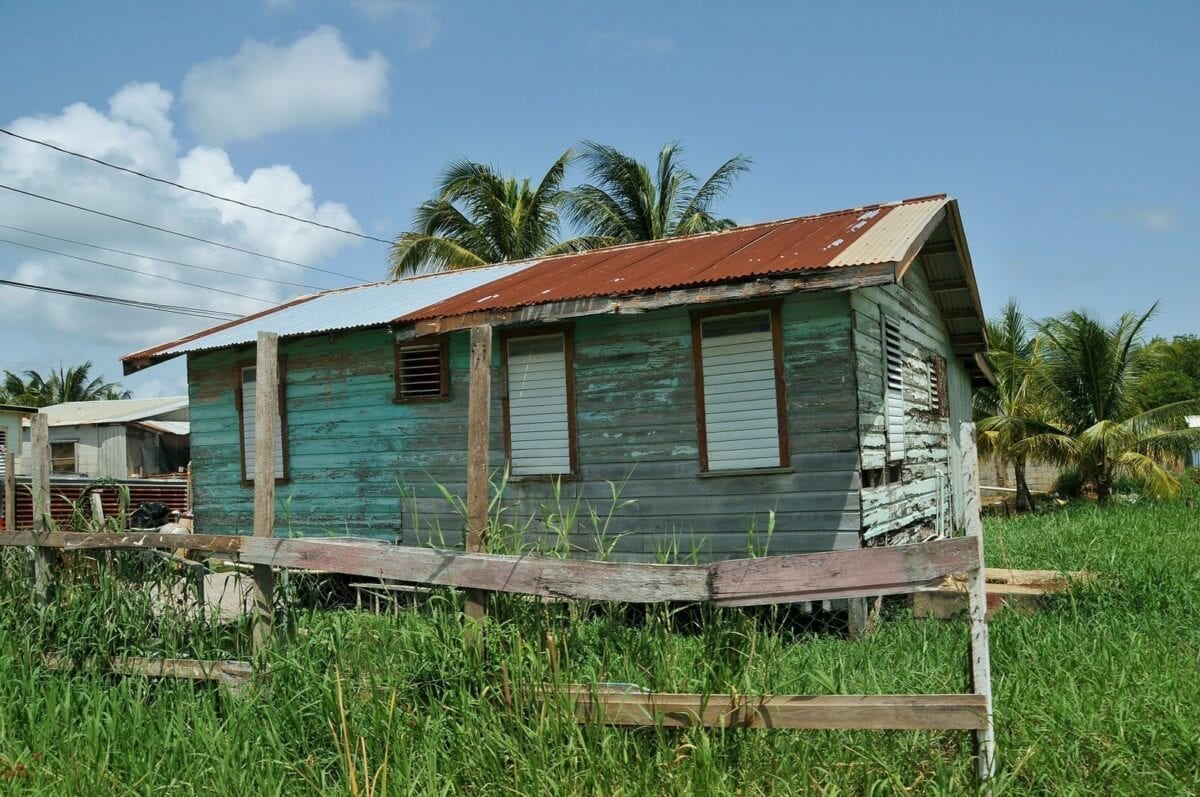
Belize, with its vibrant culture and stunning natural beauty, faces the challenge of balancing economic progress with the preservation of its unique identity. Modern development offers opportunities for improved livelihoods and infrastructure, but it’s crucial to ensure that these advancements don’t come at the cost of traditional values and customs. This delicate equilibrium requires careful planning, community engagement, and a deep understanding of Belizean authenticity.The pursuit of economic growth is often intertwined with cultural shifts.
However, successful development models prioritize the integration of traditional values into the modernization process. This allows for a harmonious coexistence of progress and cultural heritage. Examples from other countries demonstrate that such a balance is achievable.
How Modern Development Can Coexist with Traditional Values
Belizean culture is rich in traditions, crafts, and social structures. Modern development can enhance the quality of life while respecting these traditions. For example, tourism, a significant contributor to Belize’s economy, can be developed in ways that highlight and celebrate local crafts, music, and food, thereby creating a more sustainable and authentic tourist experience. This allows local artisans and communities to participate in the economy while maintaining their cultural heritage.
Examples of Countries that Have Successfully Balanced Economic Growth and Cultural Preservation
Many countries have successfully integrated economic growth with cultural preservation. New Zealand, for instance, has maintained its Maori culture while experiencing significant economic growth. Similarly, countries in Southeast Asia have developed strong economies while preserving their rich cultural heritage. These examples highlight the possibility of sustainable development that embraces cultural identity.
Potential Conflicts Between Rapid Economic Development and Cultural Preservation
Rapid economic development can sometimes lead to cultural homogenization, where local traditions are overshadowed by more dominant global trends. This can occur when there’s insufficient community involvement in development projects or when projects prioritize profit over cultural sensitivity. Another potential conflict is the displacement of communities from their ancestral lands due to infrastructure development, potentially eroding their connection to the land and their cultural identity.
The Role of Community Involvement in Development Initiatives
Community involvement is critical in development initiatives. Local communities possess deep knowledge and understanding of their cultural practices and values. Involving them in decision-making processes related to development projects ensures that these initiatives are tailored to local needs and that cultural values are respected. This collaborative approach can create a sense of ownership and participation, ultimately strengthening the connection between economic progress and cultural preservation.
Potential Threats to Belizean Authenticity
Several factors could threaten Belizean authenticity. The influx of foreign investment, while potentially boosting the economy, could lead to the displacement of traditional practices if not carefully managed. Increased tourism, while offering economic benefits, could also lead to cultural commodification, where traditional practices are reduced to mere tourist attractions. The spread of globalized consumer culture can also erode traditional values and practices.
Strategies for Safeguarding Belizean Culture During Periods of Growth
To safeguard Belizean culture, initiatives focused on promoting and preserving cultural heritage should be prioritized. This includes supporting traditional crafts, music, and dance through education, training, and financial assistance. Establishing cultural centers and museums to showcase and preserve traditional knowledge is also essential. Furthermore, fostering cultural exchange programs with other countries can help maintain cultural diversity. Additionally, community-based tourism projects can support local economies while safeguarding cultural heritage.
Potential Impacts of Growth on Belizean Culture
| Type of Growth | Potential Positive Impact | Potential Negative Impact | Mitigation Strategies |
|---|---|---|---|
| Tourism Development | Increased economic opportunities, cultural exchange, preservation of traditional crafts. | Cultural commodification, pressure on natural resources, displacement of local populations. | Community-based tourism initiatives, strict regulations on environmental impact, ensuring fair wages for local artisans. |
| Infrastructure Development | Improved access to services, enhanced connectivity. | Displacement of communities, disruption of traditional livelihoods, environmental damage. | Prioritize sustainable development, ensure adequate compensation and resettlement plans for displaced communities, enforce environmental regulations. |
| Foreign Investment | Job creation, capital infusion, technological advancement. | Cultural homogenization, exploitation of natural resources, loss of traditional practices. | Strict regulations for environmental protection, community participation in decision-making processes, support for traditional industries. |
Case Studies of Balancing Growth and Identity
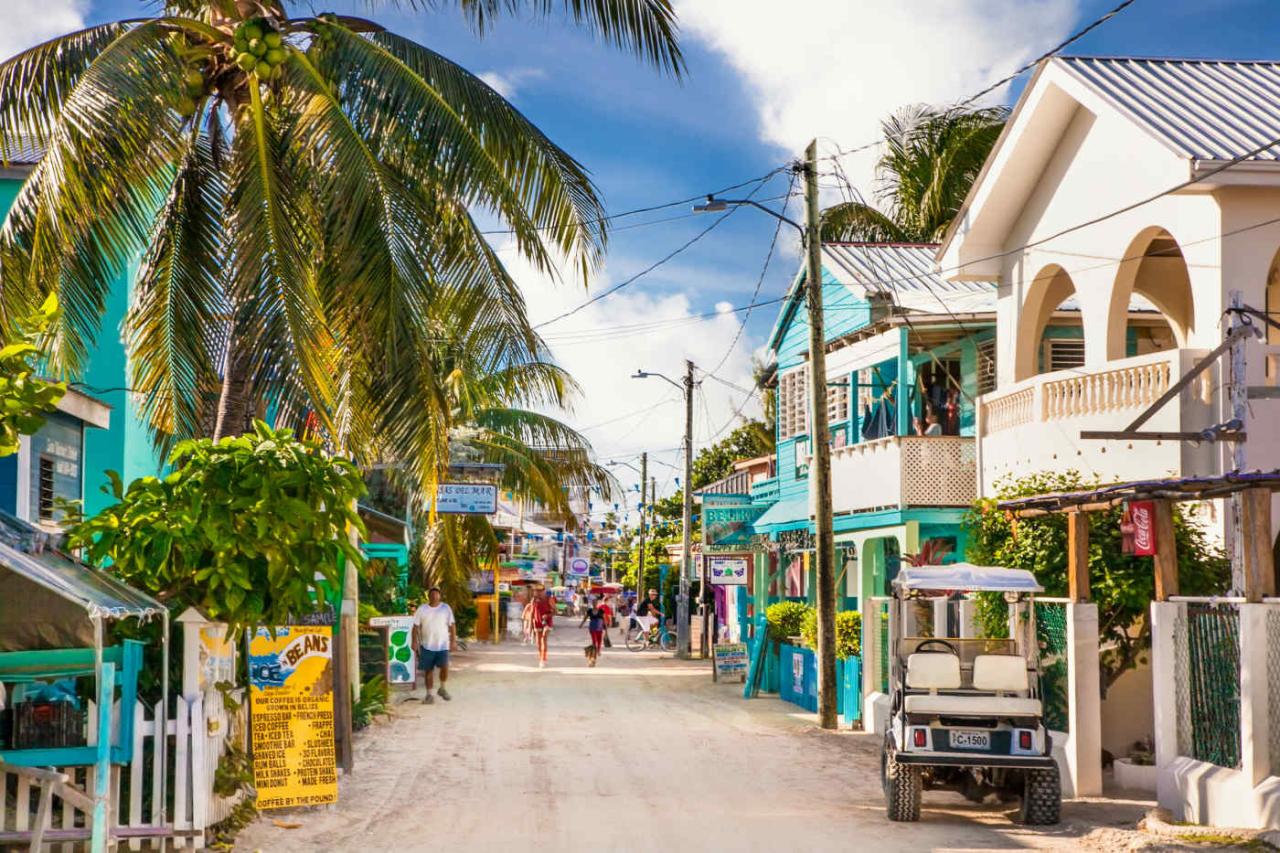
Belize, a nation rich in cultural heritage, faces the constant challenge of navigating economic progress without sacrificing its unique identity. This requires a delicate balance between attracting investment and preserving traditional practices, a delicate act that can be observed in various successful examples across the country. These case studies offer valuable insights into the possibilities of sustainable growth that honors Belize’s authenticity.The following examples highlight communities, businesses, and attractions that demonstrate how economic growth and cultural preservation can coexist harmoniously.
By examining these models, Belize can continue to develop while maintaining its vibrant cultural essence.
The Village of Hopkins and Sustainable Tourism
Hopkins, a Garifuna village, exemplifies a successful model of sustainable tourism. The community has actively engaged in developing eco-tourism initiatives, focusing on showcasing their rich culture and traditions. This has generated income for the villagers while simultaneously maintaining their unique cultural practices, language, and traditions. This success stems from community-led efforts to ensure that tourism benefits the entire community, with income distribution and cultural preservation at the forefront.
By promoting cultural experiences, such as traditional dances, music, and storytelling, Hopkins has attracted tourists while reinforcing its cultural identity. This approach highlights the potential of tourism to foster economic growth without eroding cultural heritage.
Belizean Artisans and the Modern Marketplace
Belizean artisans play a vital role in both economic growth and cultural preservation. Many artisans are adapting their traditional techniques and designs to appeal to modern tastes, without compromising the quality or cultural significance of their work. They use traditional materials and techniques to create contemporary pieces, such as painted pottery, carved wooden masks, and intricate textiles, that can be sold domestically and internationally.
This approach enables them to participate in the global market while upholding their cultural heritage. The success of these businesses is often directly linked to their ability to maintain their unique style and traditions while adapting to market demands.
Xunantunich Archaeological Site and Cultural Interpretation
Xunantunich, a majestic Mayan ruin, showcases a way to balance economic growth with cultural heritage through thoughtful interpretation. The site has developed educational programs and guided tours that provide visitors with a deep understanding of Mayan culture and history. This approach not only attracts tourists but also promotes cultural appreciation and understanding, preserving the site’s cultural significance while generating revenue.
By integrating history with a captivating narrative, the site encourages visitors to connect with the past and the rich cultural legacy of Belize.
Belize’s Arts and Crafts Industry
Belize’s rich artistic heritage provides a fertile ground for economic growth and cultural preservation. The production and sale of arts and crafts provide employment opportunities, while preserving traditional skills and cultural expressions. This industry allows artisans to share their heritage through their work, creating a bridge between cultural continuity and economic advancement. Furthermore, this industry supports local economies and fosters cultural pride.
Belize is all about growth, but keeping its unique charm is key. Seeing cruise ships like the American Queen Ocean Victory focus on adventurous itineraries, like those found on american queen ocean victory wins points for adventure focus , shows a similar desire to offer authentic experiences. This means maintaining Belize’s natural beauty and culture, allowing it to thrive without losing its soul.
The development of co-operatives and artisan workshops has facilitated growth within this sector, allowing for better control of pricing and distribution channels.
Belize is aiming for growth, but wants to keep its unique charm and authenticity. This desire for progress without losing its soul is important for maintaining its appeal. Interestingly, a recent analyst is predicting caution in credit card use, which might influence tourism spending patterns. This could potentially affect Belize’s growth plans, but hopefully, responsible tourism can still flourish.
Belize’s commitment to preserving its culture and natural beauty will likely remain a key driver for its future, ensuring its unique character endures. analyst predicting caution in credit card use
A Belizean Leader’s Perspective on Growth and Authenticity
“We must remember that our culture is our greatest treasure. Growth should never come at the expense of our traditions, language, and identity. By integrating modern practices with our heritage, we can ensure that Belize remains a vibrant and authentic nation for generations to come.”
Honorable Minister of Culture, [Name of Minister]
Potential Challenges and Solutions
Belize’s pursuit of growth, while vital for its future, presents complex challenges. Balancing economic advancement with the preservation of its unique cultural heritage requires careful consideration and proactive strategies. This section explores potential obstacles and proposes solutions to ensure Belize’s growth respects its authenticity.
Belize, it seems, wants growth, but with its unique charm and authenticity preserved. This desire for progress is perfectly mirrored in the recent news that Mondoví will soon be under Emplify Health, a company dedicated to improving health outcomes. Ultimately, both scenarios highlight a common thread – a commitment to fostering development while keeping the heart of the community intact.
Obstacles to Balancing Growth and Authenticity
Belize faces several obstacles in harmonizing economic development with cultural preservation. These include a potential influx of tourism that could negatively impact local traditions and the environment, a lack of awareness among locals regarding the importance of cultural preservation, and insufficient funding for initiatives dedicated to cultural preservation. Furthermore, a disconnect between the aspirations of external investors and the priorities of local communities can lead to conflicts over land use and resource management.
Solutions for Mitigating the Negative Impacts of Growth
Several strategies can mitigate the negative impacts of growth on Belizean culture. Promoting sustainable tourism practices is crucial. This includes implementing regulations that prioritize eco-tourism and cultural immersion experiences over mass tourism, ensuring that tourism benefits local communities directly, and educating tourists about Belizean traditions and customs. Strong community engagement is paramount. This involves empowering local communities to actively participate in the decision-making process regarding development projects, and providing them with resources and training to manage potential impacts on their culture.
Belize, with its vibrant culture and stunning natural beauty, wants growth, but it definitely wants to keep its unique charm. That’s a great goal, and it’s something to admire, isn’t it? Finding that balance is key, and that’s something you can also experience at a place like attentive elegance at secluded recreo resort in costa rica.
It’s all about a mindful, luxurious experience amidst nature, which perfectly mirrors Belize’s desire to develop while preserving its authentic essence.
Strategies for Promoting Sustainable Tourism
Sustainable tourism practices are essential to minimize negative impacts. These practices should focus on minimizing environmental damage, ensuring that local communities benefit directly from tourism activities, and providing meaningful cultural experiences for tourists. This approach emphasizes education and responsible behavior by tourists and supports local crafts and cultural performances, which in turn supports local economies and cultural preservation.
Examples include promoting eco-lodges and tours that prioritize local guides and support local businesses, and ensuring that tourists are educated about respecting local customs and traditions.
Community-Based Initiatives for Cultural Preservation
Community-based initiatives play a crucial role in fostering cultural preservation. Examples include the development of cultural centers and museums that showcase Belizean heritage, the support of local artisans and artists to maintain their traditional crafts, and the promotion of cultural festivals and events that celebrate Belizean traditions. Community-based organizations, like those dedicated to preserving Mayan traditions or promoting local cuisine, can act as vital hubs for preserving cultural heritage.
The Role of Education in Promoting Awareness
Education plays a critical role in instilling awareness of Belizean heritage. Integrating Belizean history, culture, and traditions into the school curriculum fosters a sense of pride and belonging among young Belizeans. This approach can include teaching about traditional Mayan practices, Belizean folklore, and the importance of preserving the country’s natural environment. Providing cultural education opportunities for tourists can also contribute to the preservation of cultural heritage.
Potential Challenges and Solutions Table
| Challenge | Description | Proposed Solution | Potential Impact |
|---|---|---|---|
| Loss of Traditional Practices due to Tourism | Increased tourism can lead to a decline in the practice of traditional customs. | Implement sustainable tourism guidelines, provide cultural immersion experiences, and offer educational materials to tourists about respecting local customs. | Preservation of traditional practices through sustainable tourism. |
| Inadequate Funding for Cultural Preservation Initiatives | Insufficient financial support for programs aimed at preserving cultural heritage. | Seek funding from international organizations, develop innovative fundraising strategies, and leverage partnerships with private sector entities interested in cultural preservation. | Increased resources for cultural preservation programs. |
| Disparity in Community Participation in Development | Local communities may not be adequately involved in decision-making processes regarding development projects. | Establish community forums and workshops to foster open dialogue, ensure local input in planning stages, and create transparent communication channels. | Increased community engagement and ownership of development projects. |
| Lack of Awareness of Cultural Heritage | Limited understanding among Belizeans about the importance of preserving their cultural heritage. | Integrate cultural heritage into school curricula, organize cultural events and workshops, and create platforms for sharing traditional knowledge. | Increased awareness and appreciation for Belizean culture among all generations. |
Closure
In conclusion, Belize’s pursuit of growth must be carefully balanced with the preservation of its authentic cultural identity. By understanding the historical context, economic realities, and potential conflicts, Belize can chart a course for sustainable development that honors its unique heritage. The path forward requires community engagement, thoughtful planning, and a deep respect for the traditions that have shaped Belize’s character over time.
This exploration provides a framework for understanding the challenges and opportunities as Belize navigates this delicate balance.
Helpful Answers: Belize Wants Growth But With Its Authenticity Intact
What are some specific examples of successful development initiatives in Belize?
Several community-based projects focusing on sustainable agriculture and ecotourism have shown positive results. These initiatives often involve local partnerships and empower communities to manage their resources sustainably.
How can tourism in Belize be made more sustainable?
Promoting responsible tourism practices, supporting local businesses, and ensuring that tourist infrastructure respects the environment and local culture are crucial steps.
What are some potential threats to Belizean authenticity?
Rapid economic development without adequate planning can lead to cultural homogenization, loss of traditional crafts and languages, and pressure on natural resources. Inadequate community involvement in development projects can also create issues.
What role does education play in preserving Belizean heritage?
Education about Belizean history, traditions, and values is essential for ensuring that future generations understand and appreciate the country’s unique identity. This knowledge can inspire pride and motivate individuals to participate in preserving the cultural heritage.

